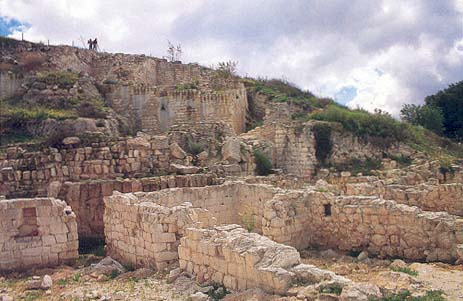Image Details

Richard Nowitz
Massive fortifications encircled the Hellenistic upper city of Maresha, which rose between 50 and 100 feet above the surrounding lower city, with its many caves. The walled upper city lies at the center of the plan. Part of the wall’s northwestern tower still stands 20 feet high (above center in photo).
Beneath the tower walls, which are 10 feet thick in places, archaeologists found remains of late Israelite (800–568 B.C.E.) and Persian (539–332 B.C.E.) period walls. According to the Bible, King Rehoboam fortified Maresha to withstand Egyptian attack (2 Chronicles 11:5–12).
During the Hellenistic period (332–112 B.C.E.), the 6-acre walled city on the hill proved insufficient for the growing population, which began to settle further down the slopes, where they dug an elaborate system of caves beneath their homes.
